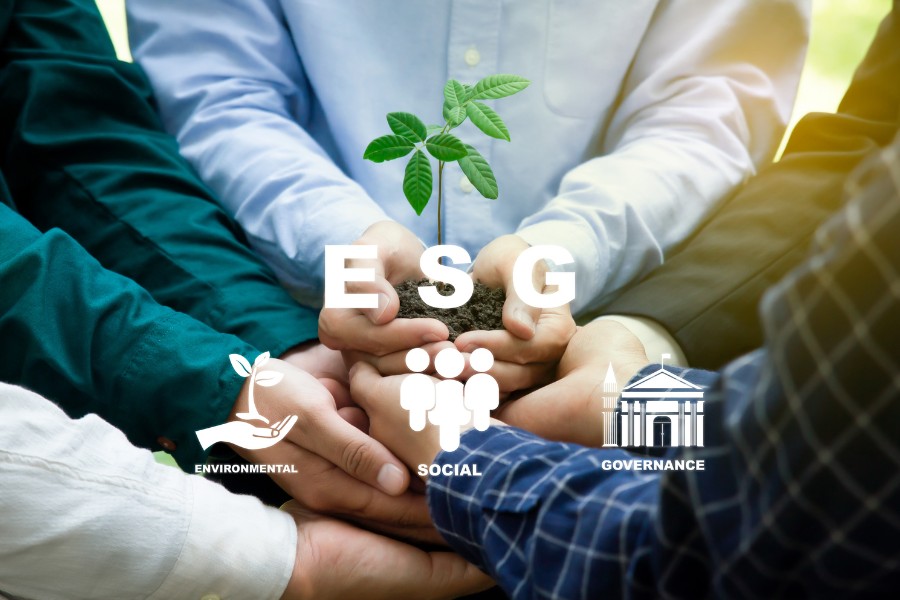
According to an awareness survey conducted in Japan 2020, nearly 80% of individual investors answered that they use corporate ESG initiatives as a factor in their investment decisions.
Investment in ESG keeps growing, and its global scale was approximately $30 trillion in 2018, and Bloomberg estimates it reaches $53 trillion by 2025.The Financial Times shows that the majority of ESG funds outperformed non-ESG funds in the last ten years.
ESG stands for Environment, Social, and Governance and defines the issues that corporates should address to achieve a sustainable society.
The United Nations defines that "Environmental" issues include methane and plastics. "Social" issues have human rights and labor standards. And "Governance" issues include director nominations and corruption.
Private evaluation organizations score the level of ESG achievement, and investments based on that score are called "ESG investing."
While the SDGs are goals for the nation and society, ESG focuses on issues that private companies can influence. Although the scope is smaller, their impact on society is enormous. Corporate ESG initiatives are crucial to the achievement of the SDGs.
The concept of ESG began to gain global recognition in 2006. The United Nations announced the Principles for Responsible Investment (PRI), an initiative aimed at institutional investors, arguing that ESG-based "responsible investment" is necessary to realize economic returns should accompany a sustainable society and that responsible investment.
Coincidentally, the collapse of Lehman Brothers in 2007, a year later, led to an increased focus on corporate governance and a corresponding rise in interest in ESG investment.
What triggered the spread of ESG investing in Japan was the signing the PRI by the GPIF (Government Pension Investment Fund) in 2015. When the GPIF, Japan's largest institutional investor, announced its participation in ESG investment, the momentum for ESG investment in Japan quickly grew.
In 2021, Japanese Prime Minister Yoshihide Suga has pledged a 46% reduction in greenhouse gases by 2030.
In 2020, under the circumstances caused by the coronavirus, 19 ESG funds outperformed S&P 500. It shows how ESG works for risk management and performs well in volatile markets.
Morningstar shows some examples of long-term ESG risks:
Some investors bet on ESG prioritizing social impact over financial outcomes.
Many of them are younger investors who genuinely want to build a better working environment and a sustainable society for their retirement and their children's generation. In 2017, Morgan Stanley found that 86% of Millennials are interested in sustainable investing.
Recently, the concept of "impact investing," which combines social and environmental contributions with economic returns, has also gained attention.
Impact investing supports projects that aim to create a better society and environment, but unlike donations, it does not compromise on economic returns. Social and environmental impact as well as financial return are set as KPIs and the investment performance is strictly measured.
For example, in agriculture, investments in eco-friendly agriculture reduce environmental impact, create jobs, increase food self-sufficiency, and increase profits by improving productivity.
As this trend grows, the value of ESG-based markets will continue to increase, creating a virtuous cycle for companies and investors working on ESG and society, and the environment.
As for the challenges, first, there is no unified standard for evaluating ESG.
Private evaluation organizations conduct ESG scores. According to the Global Sustainability Rating Initiative (GISR), as of 2018, there are 253 different ESG evaluation methods and 132 evaluation organizations.
For example, MSCI has 10 themes and 37 factors it considers when developing a score for a company, while FTSE Russell has 14 themes, and S&P has 23 criteria.
They have different evaluation methodologies, and as The Financial Times points out, it's even possible that an ESG score from one evaluation organization is high, but one from another is low.
This flood of evaluation organizations and methods has become an obstacle to corporate ESG initiatives. This situation can lead to "ESG fatigue," as companies have to prepare data for multiple evaluation agencies in conflicting frameworks and pay hefty consultant fees to improve their scores.
In 2020, the U.S. Securities and Exchange Commission (SEC) formulated a standard framework for ESG information disclosure. In Japan, in May 2021, the Financial Services Agency (FSA) released a report requesting ESG evaluation organizations to explain their methods and rationale. AI is also effective in ESG evaluation. For example, NLP (natural language processing) collects information from the Internet that may be relevant to a company's ESG. Classification algorithms link the data to appropriate fields and calculate scores with machine learning.
If AI systems were utilized further, companies would no longer need to scramble to collect and disclose data for evaluation organizations, and evaluation organizations, could reduce the vast personnel costs from analysts.
More and more companies will be strengthening their ESG initiatives to keep up with the trend of ESG investment, which seems desirable from the perspective of increasing the value of ESG investment. However, if companies do not understand the essence of ESG and pursue only short-term profits, it will be difficult for them to gain long-term support from investors. In some cases, they may even fall into the trap of "greenwashing" or something similar.
Estimates from the United Nations Conference on Trade and Development (UNCTAD) and the current investment situation show a shortfall of $2.5 trillion in annual investment to achieve the SDGs. This shortage is a sufficiently realistic figure given the global scale of ESG investing ($30 trillion~), as mentioned at the beginning.
To achieve an actual increase in corporate value, companies would need to sincerely address the social and environmental risks they face and proactively communicate their efforts to investors through ESG frameworks. Such actions will create a positive chain of events in the market and society, which will become a significant driving force toward realizing SDGs and a sustainable society.
Founded by a former senior research engineer at Google DeepMind, Recursive brings together world-class talent from across disciplines to engineer results where others can't.





